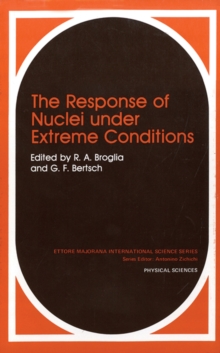
Spectroscopy of Solid-State Laser-Type Materials PDF
by Baldassare Di Bartolo, Guzin Armagan
Part of the Ettore Majorana International Science Series series
Description
This book presents an account of the course "Spectroscopy of Solid-State Laser-Type Materials" held in Erice, Italy, from June 16 to 30, 1985.
This meeting was organized by the International School of Atomic and Molecular Spectroscopy of the "Ettore Majorana" Centre for Scientific Culture.
The objective of the course was to present and examine the recent advances in spectroscopy and theoretical modelling relevant to the interpretation of luminescence and laser phenomena in several classes of solid-state materials.
The available solid-state matrices (e.g. halides, oxides, glasses, semiconductors) and the full range of possible activators (transition ions, rare earth ions, post-transition ions, actinides, color centres) were considered.
By bringing together specialists in the fields of solid-state luminescence and of solid-state laser materials, this course provided a much-needed forum for the critical . assessment of past developments in the R&D of solid-state lasers.
Additional objectives of the meeting were to identify new classes of host/activator systems that show promise of laser operation; to alert researchers in solid-state luminescence to current technological needs for solid-state tunable lasers operating in the visible and infrared spectral regions; and generally to provide the scientific background for advanced work in solid state lasers.
A total of 71 participants came from 54 laboratories and 21 nations (Austria, Belgium, Canada, F.R. of Germany, France, Greece, Ireland, Israel, Italy, the Netherlands, P.R. of China, Poland, Rumania, Sweden, Switzerland, South Korea, Spain, Turkey, United Kingdom, U.S.A. and U.S.S.R.).
Information
-
Download - Immediately Available
- Format:PDF
- Publisher:Springer US
- Publication Date:06/12/2012
- Category:
- ISBN:9781461308997
Other Formats
- Paperback / softback from £95.55
- Hardback from £81.69
Information
-
Download - Immediately Available
- Format:PDF
- Publisher:Springer US
- Publication Date:06/12/2012
- Category:
- ISBN:9781461308997










